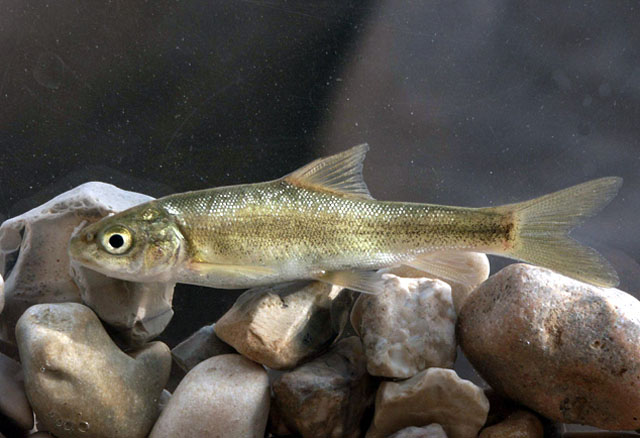| Cyprinidae (Minnows or carps), subfamily: Barbinae |
| 50 cm TL (male/unsexed); max. reported age: 8 years |
|
benthopelagic; freshwater |
| Eurasia: Jordan River drainage basin, the entire Levant, Mesopotamia and parts of southern Turkey. |
|
Dorsal spines (total): 4-4; Dorsal soft rays (total): 8-8 |
| Occurs in lakes, streams with fast and slow-moving water currents and in clear and muddy water. Bottom fish that feeds on aufwuchs which it scrapes from the substrate with the horny sheet of the lower lip. Its diet consists of algae, aquatic invertebrates, and detritus (Ref. 13609). It spawns between January and March in small streams where it deposits its eggs on gravel. Tasteless fish, and the spawn is toxic (Andrey Marlin, pers. comm., 2003). |
|
Least Concern (LC); Date assessed: 03 February 2013 Ref. (130435)
|
| harmless |
|
P. Bianco and S. Zerunian collection: Mand river, southern Iran, (holotype: I.Z.A. 7892, 9.25 cm SL ; paratypes: 13 specimens, 6.8-8.6 cm SL, I.S.B.B. uncatalogued) (Ref. 47064). Found in Mesopotamia; also in Namak Lake, Esfahan, Tigris River, Gulf, Kor River, Lake Maharlu, Sirjan, Kerman-Na'in, Hormuz, Lut and Hamun-e Jaz Murian basins (Ref. 39702).
Reported in Armand River, Chaharmahal va Bakhtyari Province. Known to be infected with these parasites Rhabdochona denudata , Lamproglena compacta, Allocreadium pseudaspii,
Allocreadium isoporum, Paradiplozoon sp., Gyrodactylus sp1, Dactylogyrus chramuli, Dactylogyrus pulcher, Dactylogyrus gracilis, Dactylogyrus lenkorani, Myxobolus musayevi, and
Ichthyophthrius multifilis (Ref. 125597). Also in Ref. 47064. |
Source and more info: www.fishbase.org. For personal, classroom, and other internal use only. Not for publication.

